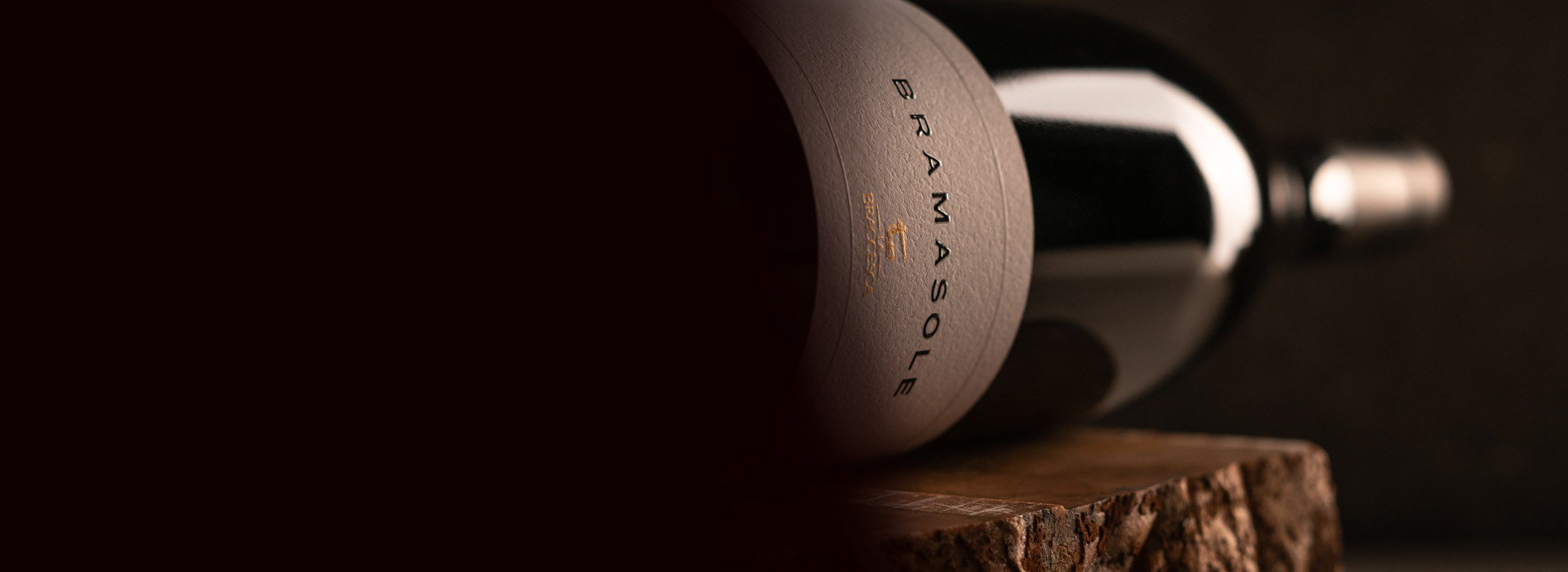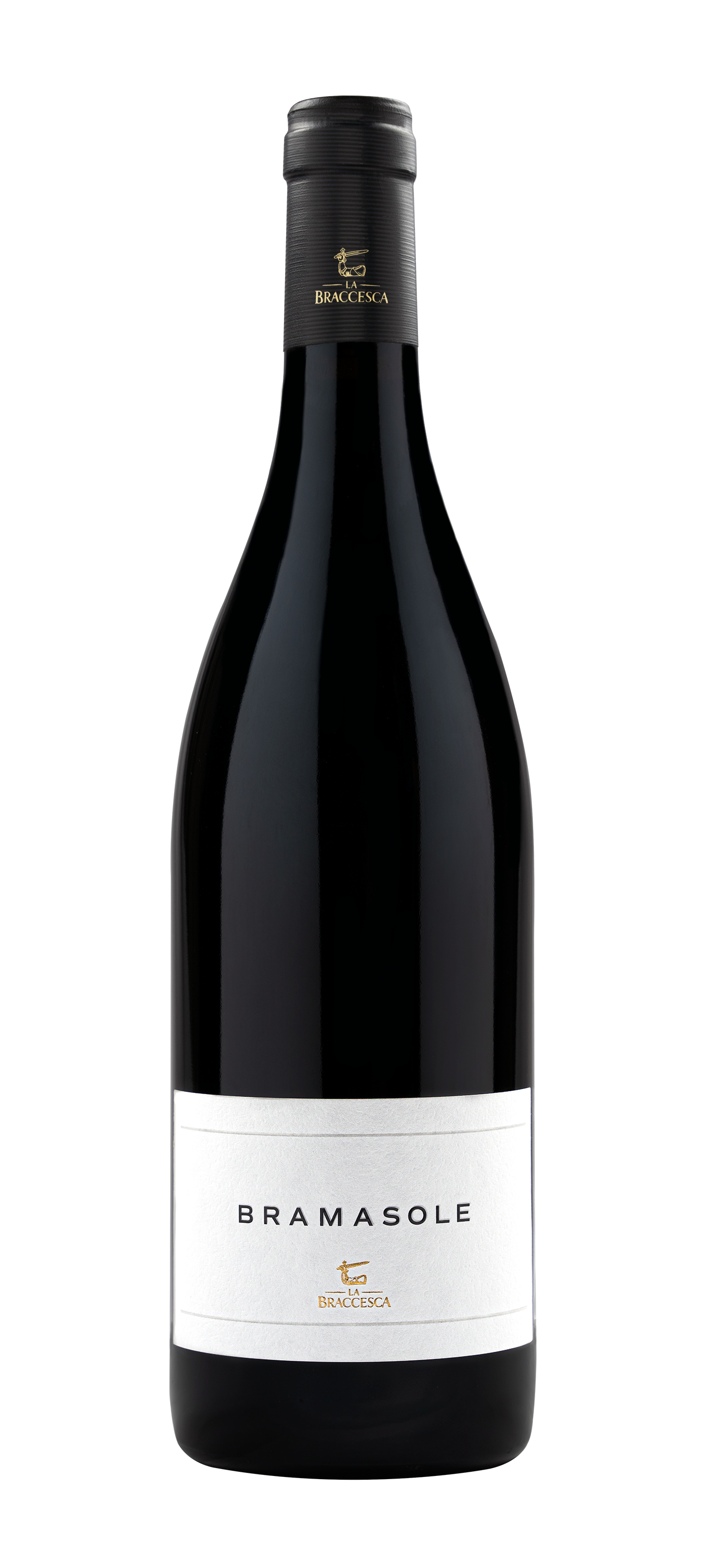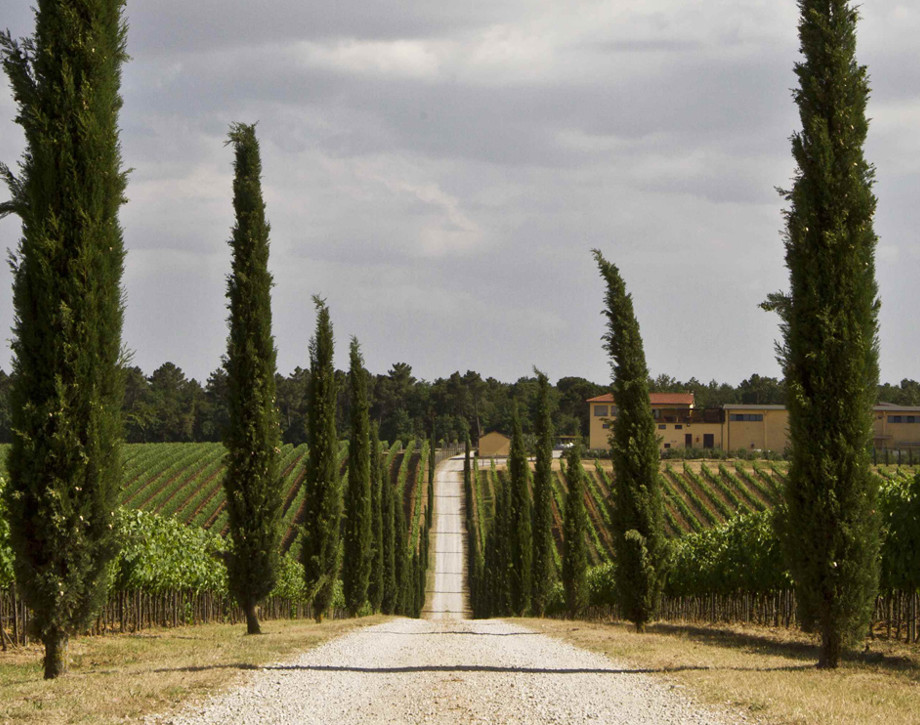Bramasole

Climate
The winter of the year 2010 was lightly cooler than averages. Bud-burst took place in mid-April. A cool summer and a warm and dry September led to a slow and gradual ripening of the crop and led to a late harvest properly protracted over time. Picking began in mid-September and lasted until the end of October.
Vinification
The Syrah grapes were harvested - by hand – towards the end of September. After destemming and pressing, the initial period of skin contact began with low temperatures to extract aromas and then rose to approximately 82° Fahrenheit (28° centigrade). The overall maceration of the must on its skins lasted approximately three weeks. The wine then went into new French oak barrels, where it went through a complete malolactic fermentation. The aging of the wine, which lasted 18 months, concluded with the bottling in September of 2012.
Historical Data
The estate’s name comes from the historical farm that once stood there, owned by the Count of Bracci, whose coat of arms appears on the estate’s logo; an arm covered with armor brandishing a sword. The property extends over an area of 508 hectares (1255 acres) and the vineyards cover an area of 340 hectares (840 acres) divided into two blocks: the first is 366 hectares (904 acres) of which 237 (585 acres) are planted with vineyards and is located on the border between the cities of Montepulciano and Cortona. The other block is 142 hectares (350 acres) of which 103 (254 acres) are planted with vineyards, it extends all the way to Montepulciano encompassing three of the most famous parcels of land known for the production of great red wines: Cervognano, Santa Pia and Gracciano. Bramasole is made from the sunniest part of the vineyard in one of Cortona’s best areas for the production of premium quality Syrah. Bramasole is a wine able to evolve over time and reflect this territory and its long-standing winemaking traditions using a new untraditional variety. Bramasole’s first vintage was 2000.
Tasting Notes
2010 was a high level vintage. Bramasole shows elegant and classy aromas of white plums, blackberries, black pepper and - lightly on the finish - tobacco. The flavors, with an ample and supple texture, repeat the berries along with notes of liquorice and tobacco. The finish and aftertaste are long and savory with soft tannins which add to the wine’s drinking pleasure.
Awards
James Suckling 95/100 USA Wine Advocate 92/100 USA

The Wine
Bramasole is made from the sunniest part of the vineyard, from the Antinori family’s innovative spirit and from one of Cortona’s best areas for producing premium quality Syrah. Bramasole is a wine able to evolve over time and reflect this territory and its long-standing winemaking traditions using a new untraditional variety. The first vintage to be produced was the 2000 vintage.

Climate
The winter of the year 2010 was lightly cooler than averages. Bud-burst took place in mid-April. A cool summer and a warm and dry September led to a slow and gradual ripening of the crop and led to a late harvest properly protracted over time. Picking began in mid-September and lasted until the end of October.
Vinification
The Syrah grapes were harvested - by hand – towards the end of September. After destemming and pressing, the initial period of skin contact began with low temperatures to extract aromas and then rose to approximately 82° Fahrenheit (28° centigrade). The overall maceration of the must on its skins lasted approximately three weeks. The wine then went into new French oak barrels, where it went through a complete malolactic fermentation. The aging of the wine, which lasted 18 months, concluded with the bottling in September of 2012.
Historical Data
The estate’s name comes from the historical farm that once stood there, owned by the Count of Bracci, whose coat of arms appears on the estate’s logo; an arm covered with armor brandishing a sword. The property extends over an area of 508 hectares (1255 acres) and the vineyards cover an area of 340 hectares (840 acres) divided into two blocks: the first is 366 hectares (904 acres) of which 237 (585 acres) are planted with vineyards and is located on the border between the cities of Montepulciano and Cortona. The other block is 142 hectares (350 acres) of which 103 (254 acres) are planted with vineyards, it extends all the way to Montepulciano encompassing three of the most famous parcels of land known for the production of great red wines: Cervognano, Santa Pia and Gracciano. Bramasole is made from the sunniest part of the vineyard in one of Cortona’s best areas for the production of premium quality Syrah. Bramasole is a wine able to evolve over time and reflect this territory and its long-standing winemaking traditions using a new untraditional variety. Bramasole’s first vintage was 2000.
Tasting Notes
2010 was a high level vintage. Bramasole shows elegant and classy aromas of white plums, blackberries, black pepper and - lightly on the finish - tobacco. The flavors, with an ample and supple texture, repeat the berries along with notes of liquorice and tobacco. The finish and aftertaste are long and savory with soft tannins which add to the wine’s drinking pleasure.
Awards
James Suckling 95/100 USA Wine Advocate 92/100 USA

Tenuta La Braccesca
The estate’s name comes from the historical farm that once stood there, owned by the Count of Bracci, whose coat of arms appears on the estate’s logo; an arm covered with armor brandishing a sword. Marchesi Antinori acquired the estate in 1990. The property extends over an area of 508 hectares (1255 acres) and the vineyards cover an area of 340 hectares (840 acres) divided into two blocks: the first is 366 hectares (904 acres) of which 237 (585 acres) are planted with vineyards and is located on the border between the cities of Montepulciano and Cortona. The other block is 142 hectares (350 acres) of which 103 (254 acres) are planted with vineyards, it extends all the way to Montepulciano encompassing three of the most famous parcels of land known for the production of great red wines: Cervognano, Santa Pia and Gracciano.

Soil
Clay loam
















